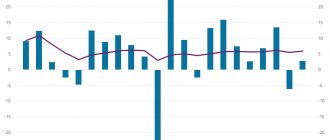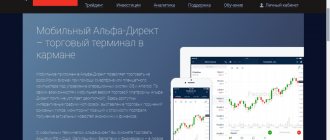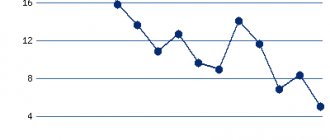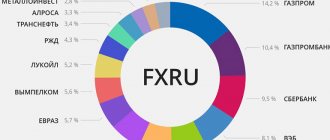Bookmarked: 0
What is the reserve fund of the Russian Federation? Description and definition of the concept
The Reserve Fund of the Russian Federation is a part of the federal budget finances, which is subject to separate special management and accounting. The funds from the Reserve Fund must be used to ensure that the state fulfills its expenditure obligations in the event of a decrease in revenues from the oil and gas sector of the Russian economy. The Reserve Fund is managed by the Ministry of Finance.
The Reserve Fund of the Russian Federation was created on 02/01/008 when the Stabilization Fund was divided into the National Welfare Fund of Russia and the Reserve Fund.
This fund is formed today from the following income:
- excess revenues from the sale of gas and oil;
- income from the management of the Reserve Fund;
- oil and gas revenues (mineral extraction taxes, duties charged for the export of goods made from oil, export duties on crude fuel).
- Reserve funds, in addition to the Russian Federation, are established by most countries dependent on commodity prices, for example, Oman, Venezuela, Norway, Azerbaijan, and Nigeria.
According to the latest data from the Ministry of Finance, the amount of the Reserve Fund of the Russian Federation as of May 1, 2015 was 3,950.49 billion rubles.
The largest value of the Reserve Fund
When an oil and gas transfer is formed, oil and gas revenues in full go to the Reserve Fund. The standard value of the Reserve Fund is approved by federal law in relation to the federal budget for the next planning period and financial year in absolute size, which is determined taking into account 7% of the volume of gross domestic product, which is forecast for the corresponding year. When the Reserve Fund is filled to a given size, oil and gas revenues are sent to the National Welfare Fund of Russia.
How much money is in reserves?
In early August, the Ministry of Finance reported that the liquid part of the National Welfare Fund reached 5.7% of GDP, and the entire fund doubled in July - to 7.86 trillion rubles. This sharp increase is explained by the fact that it was in July that the department credited the currency acquired through additional oil and gas revenues in 2021 to the National Welfare Fund. According to the Ministry’s estimates, the liquid part of the fund may reach the threshold value of 7% of GDP by the end of 2019. In this case, the Ministry of Finance expects to spend 1.8 trillion rubles from the National Welfare Fund in 2020, and another 4.2 trillion rubles in 2021. The main goal of this initiative is to accelerate economic growth. In the absence of serious factors of economic growth, NWF funds could spur GDP growth .
Source: Ministry of Finance of the Russian Federation
Formation of the Reserve Fund
The reserve fund is formed thanks to:
- oil and gas revenues of the federal budget in an amount that exceeds the amount of oil and gas transfer that is approved for the required financial year, when the accumulated volume of the Reserve Fund is not greater than its normal value;
- income from the management of the Reserve Fund.
At the moment, in accordance with the Federal Law of September 30, 2010 N 245-FZ “On Amendments to the Budget Code of the Russian Federation and other legislative acts of the Russian Federation” (hereinafter referred to as the Law) from January 1, 2010 to January 1, 2015, the standard value of the Reserve Fund is not determined, oil and gas Federal budget revenues are not used to provide financial support for oil and gas transfers and for the formation of the National Welfare Fund and the Reserve Fund, but are used to financially support federal budget expenditures.
What will happen to the economy if the National Welfare Fund is printed? Economists' opinions
Oleg Shibanov, Professor of Finance at NES, Director of the Center for Research in Financial Technologies and Digital Economy Skolkovo-NES:
— The Central Bank is in favor of continuing to accumulate reserves. The Ministry of Economy proposes to spend these funds on measures to stimulate the economy. Which position do you lean towards?
— A balanced position is needed here. We understand that reserves of 7% of GDP are not too large. At the same time, it is almost obvious that a significant decrease in government demand in the economy over the past 4 years has affected both actual growth and (probably) potential growth. Therefore, in the future it makes sense to divide the new possible excess income into two parts. For example, 50% can be saved, and 50% can be allocated either to national projects or to specific investment needs. Moreover, there is an effective way to return funds to the economy - by reducing taxes on citizens and businesses.
— How might the spending of NWF funds affect the economy and the exchange rate if such a decision is made? Will it be possible to avoid shaking macrostability?
— It depends both on the reaction of the Bank of Russia, that is, on its rates, and on what projects the funds will be allocated to. For example, if there is a tax cut or assistance to small and medium-sized businesses, we can get both an increase in growth and an improvement in the well-being of citizens. There are risks to inflation and financial stability, but the significant decline in potential growth in recent years also poses risks to citizens' real incomes.
— Which of the proposals to spend the NWF money do you think will prevail?
— I think that part of the funds will be directed to national projects , and the other part could theoretically be used to reduce taxes. True, it is not yet completely clear how ready and willing the Ministry of Finance is for tax changes.
— How do you feel about the initiative to use NWF funds for government export loans?
— This approach allows us to technically have no or almost no influence on inflation within the economy. At the same time, our export-oriented companies will develop, which often plays an extremely positive role for economic development. But most likely, such a decision will lead to stabilization or a slight increase in citizens’ incomes. Such a measure may carry some economic risks.
— Do you agree with the position that active spending of National Welfare Fund funds within the country negates the meaning of the budget rule?
- In a sense, yes. In a situation (like now) where the budget surplus is used almost entirely to invest in foreign assets, we effectively isolate the economy from oil and gas money above about $42 per barrel. But we must understand that the budget rule is not absolute. In a situation where the state has already accumulated, from its point of view, a sufficient reserve to overcome crises, the decision on the cut-off level for oil revenues can be revised. This will not cancel the fiscal rule, but will only move the threshold above which oil revenues are cut off from the economy.
— Will it really be possible to solve the problem of stimulating economic growth by spending funds from the National Welfare Fund?
- Probably yes. Here you always have to be quite careful, because we do not know 100% how the Russian economy will react to these changes. But there is a pool of research on developing countries showing that government spending helps grow economies. Therefore, the chance to increase potential growth and simply increase GDP seems obvious.
— From your point of view, is there a more effective way to bring the Russian economy out of depression?
— Generally speaking, we see how much the reduction of the state’s presence in the economy through investments has affected it over the past 5 years. It seems to me that without some return of these funds, either through tax cuts or through government spending, the economy itself will not accelerate much. Of course, there is a need to attract foreign investment . Unfortunately, over the past 5 years they have also decreased significantly. And experience shows that in developing countries the state greatly influences the perception of the investment climate by foreign investors. In particular, if the state does not invest, it turns out to be more difficult to convince foreigners that they should invest in our economy.
Victor Tunev, economist:
—Spending within 2% of GDP per year will not affect macrostability, but the devil is in the details - how transactions with foreign currency from the National Wealth Fund will be carried out.
In my opinion, given the current state of the budget, the issue of using the National Welfare Fund will be postponed (the example with individual pension capital shows that no one is ready to take responsibility and make decisions).
towards the initiative to use NWF funds for government export loans . This is tantamount to free distribution of currency to Russian exporters, who now already have excellent competitive advantages from the low exchange rate of the ruble , the cost of labor and energy resources. Foreigners will benefit from this, and Russia will simply waste its real and financial resources without creating anything for itself. It is economically more correct to spend funds within the country or on imports. Investments in infrastructure, pension savings and low-income incomes are the best ways.
The point of the budget rule is to fix a certain price for oil for the economy and not spend excess oil and gas revenues. The use of funds from the National Welfare Fund implies an upward shift in the cut-off price. If the cut-off price remains at $50–60, then the budget rule will continue to work effectively. Any additional spending increases GDP. It is important that the rate of cost growth be long-term.
2% of GDP per year is just what is not enough for normal GDP growth of about 3% per year without inflationary consequences. There are simply no other ways to bring the economy out of depression in the current political situation. If you do not increase budget spending, you can only count on lower interest rates and faster growth of private debt. But this risks a future private debt crisis.
In conditions of low economic growth, and even more so with near-zero growth rates of real disposable income of the population, budget expenditures need to be increased, and specifically within the country. But what expenses, in what amount and from what sources - matters for inflation, exchange rates and other macroeconomic parameters. So far we hear extreme points of view: 1) spend nothing, 2) spend all or half of what we have accumulated in excess of 7% of GDP.
My option is not even between, but in a completely different approach. It is necessary for government spending to increase by 7–8% per year for several years, and the sources of increased spending may not necessarily be the National Welfare Fund. Government spending should not and cannot be limited by the volume of the National Welfare Fund, foreign exchange reserves or other finite financial resources in a sovereign country with a floating exchange rate. In the next two years, current budget revenues will be enough, and then either an increase in public debt or a faster increase in the cut-off price according to the budget rule will be required (currently 2% per year from the level of $40, but the price of oil can be increased by 4-5% per year).
But in any case, it will be necessary to change the mechanism for implementing the budget rule in terms of currency purchases. Now the Bank of Russia buys more foreign currency on the open market than the additional export revenues of oil companies (up to ¼ of the mineral extraction tax on oil - sales to the domestic market). An increase in budget expenditures will partially lead to an increase in imports and a possible imbalance in the foreign exchange market.
In 2016–2018, federal budget expenditures showed dynamics of 0–2%, and the consolidated budget - about 4% per year, which is below inflation. In 2019, it is planned to increase expenses by 7–8%, but according to the results of the first half of the year, the growth rate of expenses is again lower than inflation (3% for the federal budget and 4% for the consolidated budget). Non-oil and gas budget revenues are growing at a rate of 15% in 2019 - this is enough to close all issues with the growth of budget expenditures for two years.
Reserve Fund Management
The goals of managing the funds of the Reserve Fund are to ensure the savings of the Fund’s funds and a stable level of income from its investment in the long term. Managing the fund's funds for these purposes allows one to obtain negative financial results in the short term. The funds of the Reserve Fund are managed by the Ministry of Finance of the Russian Federation in the manner established by the Government of the Russian Federation. Special powers to manage the Reserve Fund may be exercised by the Central Bank of the Russian Federation.
The reserve fund is made up of amounts that are deducted from the annual net profit in case of unforeseen and extraordinary losses, for the restoration and replenishment of the main capital. Sometimes the amount of deductions is determined by the charters of enterprises.
In insurance
In insurance, several types of reserve funds are created, which are usually called insurance reserves and differ in the method of formation and purpose. Insurance companies distinguish:
- reserve for losses that are reported but not settled;
- unearned premium reserve;
- stabilization reserve;
- reserve for actual but not reported losses;
- other types of reserves.
Purpose
The reserve fund is funds from the federal budget. The fund must ensure that the state fulfills its own spending obligations in the event of a decrease in oil and gas revenues to the federal budget.
The Reserve Fund contributes to the stability of the country's economic development, reducing inflationary pressure and reducing the dependence of the national economy on fluctuations in revenues from the export of enduring natural resources.
The Reserve Fund actually replaced the stabilization fund of the Russian Federation. Unlike the Stabilization Fund of the Russian Federation, in addition to federal budget revenues from oil exports and production, the sources of formation of the Reserve Fund are also federal budget revenues from gas exports and production.
The largest size of the Reserve Fund is fixed at 10% of the volume of gross domestic product of the Russian Federation projected for the required financial year.
Why is it important?
What the Russian authorities decide to do with the NWF money will largely determine how the Russian economy—and therefore the Russian financial market—will fare in the coming years.
If officials decide to spend reserves within the country, the regulator will have to sell the currency. Such sales will support the ruble, it will begin to strengthen. In addition, the appearance of additional money in the system will affect the overall level of liquidity in the market. In this situation, the Central Bank may continue to more actively reduce rates, which is good for the bond market and investors.
If the unfreezing of the National Welfare Fund is postponed, Russia will continue to accumulate reserves - this will further strengthen the country’s financial security in case of crises, but will obviously deprive the Russian economy of hardly the only chance in the current conditions to increase its extremely weak growth rates.
TOP ↑
Education
Oil and gas revenues of the federal budget are generated due to:
- tax on the extraction of mineral resources, such as hydrocarbon raw materials (gas condensate, combustible natural gas, oil);
- export customs duties on crude oil;
- export customs duties on natural gas;
- export customs duties on goods produced from oil.
Some part of these oil and gas revenues, such as oil and gas transfers, are used every year to finance federal budget expenses. The amount of oil and gas transfer is approved by the federal law in relation to the federal budget for the next financial year and the planned period in absolute size, which is calculated as 3.7% of the volume of gross domestic product projected for the required year, which is specified in the federal law in relation to the federal budget for a certain planned period and financial year.
After the formation of the oil and gas transfer in full, oil and gas revenues can go to the Reserve Fund.
The standard value of the Reserve Fund is approved by the federal law on the federal budget for the next planning period and financial year in an absolute amount, which is determined taking into account 10 percent of the volume of gross domestic product that is forecast for the corresponding year. After the Reserve Fund is filled to this size, oil and gas revenues are sent to the National Welfare Fund.
From 01/01/2010 to 01/01/2015 the standard value of the Reserve Fund was not determined; oil and gas revenues of the federal budget are not used to ensure financial oil and gas transfers and for the formation of the National Welfare Fund and the Reserve Fund, but are aimed at financially supplying expenses in the federal budget.
Another source of formation of the Reserve Fund is income from fund management.
From 01/01/2010 to 02/01/2016, income from the management of the Reserve Fund is not credited to the Fund, but is directed to the financial supply of federal budget expenses.
Oil and gas revenues in the federal budget, the Reserve Fund and the National Welfare Fund are accounted for in separate accounts, taking into account federal budget funds that are opened in the Central Bank of the Russian Federation by the Federal Treasury.
From 01/01/2010 to 01/01/2015, separate accounting of oil and gas revenues in the federal budget is not carried out.
Transfers and calculations of funds due to the formation and use of oil and gas transfers, oil and gas revenues in the federal budget, funds of the National Welfare Fund and the Reserve Fund are made by the Ministry of Finance of the Russian Federation in the manner established by the Government of the Russian Federation.
From 01/01/2010 to 01/01/2015, the procedure for making transfers and settlements of funds due to the formation and use of oil and gas transfers.
REFERENCE: The Russian Reserve Fund, which ceased to exist on Thursday
MOSCOW, February 1 - PRIME. The Russian Reserve Fund will cease to exist on February 1.
Below is some background information.
The Reserve Fund of the Russian Federation is part of the federal budget. It was designed to ensure that the state fulfills its spending obligations in the event of a decrease in oil and gas revenues to the federal budget.
The Reserve Fund of the Russian Federation officially ceased to exist
The idea of creating a state “safety cushion” in case of falling oil prices belonged to ex-Minister of Finance Alexei Kudrin. The developed mechanism, on the one hand, accumulated additional oil and gas revenues in reserves, and on the other, was insurance against excessive strengthening of the ruble in the context of a rapid rise in oil prices and the influx of foreign currency into the country. For these purposes, the Russian Stabilization Fund was created in 2004.
On January 30, 2008, the Ministry of Finance transformed the Stabilization Fund into the Reserve Fund (formed to ensure federal budget expenditures in the event of a significant drop in oil prices) and the National Welfare Fund (to solve problems of the pension system).
In pursuance of amendments to the Budget Code of April 26, 2007 and in accordance with the order of the Ministry of Finance of January 29, 2008, the Federal Treasury on January 30, 2008 transferred funds in US dollars, euros and pounds sterling to separate accounts for the accounting of funds of the Reserve Fund and the National Welfare Fund .
As of January 31, 2008, the volume of the Reserve Fund amounted to 3.069.0 billion rubles, and the National Welfare Fund - 782.8 billion.
The Reserve Fund actually replaced the Stabilization Fund. Unlike the Stabilization Fund, in addition to federal budget revenues from oil production and export, the sources of formation of the Reserve Fund were also federal budget revenues from gas production and export.
The Reserve Fund was formed at the expense of oil and gas revenues of the federal budget in an amount exceeding the amount of oil and gas transfer approved for the financial year, allocated to finance federal budget expenditures, if the accumulated volume of the Reserve Fund did not exceed its standard value - as well as at the expense of income from the management of the Reserve Fund.
The standard value of the fund was approved by the law on the federal budget for the next financial year and planning period in an absolute amount determined on the basis of 10% of the volume of gross domestic product projected for the corresponding year. If the value of the Reserve Fund exceeded 10% of GDP, oil and gas revenues were directed to the National Welfare Fund.
The management of the Reserve Fund was carried out by the Russian Ministry of Finance in the manner established by the government. Certain powers to manage the fund's assets could be exercised by the central bank. The goals of managing the Reserve Fund's assets were to ensure the safety of the fund's assets and a stable level of income from its placement in the long term. For these purposes, the possibility of obtaining negative financial results in the short term was allowed.
Management of the fund's funds was carried out by purchasing foreign currency on them and placing it on accounts for accounting for the Reserve Fund in foreign currency (US dollars, euros, pounds sterling) in the Bank of Russia (at the same time, the Central Bank paid interest for the use of funds), as well as by placement of fund funds in foreign currency and financial assets denominated in foreign currency. Such financial assets included debt obligations of foreign states, government agencies and central banks and international financial organizations, deposits in foreign banks and credit organizations. At the same time, the long-term credit rating of the selected asset should not be lower than AA- according to the standards of leading rating agencies.
The fund's funds were invested in bonds of the USA, Britain and other European countries with the highest credit ratings.
They could be used to financially support an oil and gas transfer in the event of insufficient oil and gas revenues from the federal budget received for the corresponding financial year for these purposes, as well as early repayment of government external debt. The maximum volume of use of the fund's funds for financial support of oil and gas transfers was approved by the budget law for the next financial year and planning period.
The volume of the Reserve Fund has grown slightly since the beginning of its formation and, on September 1, 2008, reached its largest value in dollar equivalent - $142.6 billion (3.504 trillion rubles). Then oil prices fell and the fund stopped being replenished.
From January 1, 2010 to January 1, 2015, the fund’s funds were used to support federal budget expenses.
According to most experts, the accumulated reserves helped Russia not only survive the global crisis of 2008 without serious social and financial upheavals, but also came to the rescue more than once in subsequent years. The reserve fund contributed to the stability of the country's economic development, reducing inflationary pressure and reducing the dependence of the national economy on fluctuations in revenues from the export of non-renewable natural resources.
In May 2021, Finance Minister Anton Siluanov announced that the Reserve Fund would be completely spent this year. In December 2017, the Ministry of Finance, as planned, spent the last trillion rubles from the Reserve Fund. Foreign currency funds in the amount of about 1 trillion rubles were used to cover the budget deficit. These assets, as the Ministry of Finance indicated, were previously kept in accounts with the Central Bank (7.62 billion US dollars, 6.71 billion euros and 1.1 billion pounds sterling). As a result, zero balances were formed on the fund's accounts.
According to the law amending the Budget Code, which was adopted on July 29, 2021, the Reserve Fund was supposed to cease to exist on February 1, 2021. By this time, his funds in full should have been credited to the National Welfare Fund. All additional oil and gas budget revenues, according to the new norms of the Budget Code, will now be directed to the National Welfare Fund.
Managment structure
The Reserve Fund is managed by the Ministry of Finance of the Russian Federation in the manner established by the Government of the Russian Federation. Some powers to manage the resources of the Reserve Fund may be exercised by the Central Bank of the Russian Federation.
The Reserve Fund is managed using the following methods (both simultaneously and individually):
1) by receiving foreign currency thanks to the funds of the Fund and placing it in accounts, taking into account the funds of the Reserve Fund in foreign currency (pounds sterling, euros, US dollars) in the Central Bank of the Russian Federation. For the use of funds in these accounts, the Central Bank of the Russian Federation pays interest established by the bank account agreement;
2) by placing the Fund’s funds in foreign currency and monetary assets that are denominated in foreign currency, the list of which is determined by the legislation of the Russian Federation.
The Ministry of Finance of the Russian Federation manages the funds of the Reserve Fund in accordance with the first method, that is, by placing funds in foreign currency accounts of the Central Bank of the Russian Federation as follows: according to the procedure for crediting and calculating interest accrued to accounts using the funds of the Reserve Fund in foreign currency, which is approved by the Ministry of Finance of the Russian Federation . The Bank of Russia pays interest on the balances on these accounts, which is equivalent to the return on indices that are formed from financial assets in which funds from the Reserve Fund can be placed, for which the requirements are approved by the Government of the Russian Federation.
What do they want to spend excess income on?
In recent months, officials have been actively discussing how to spend the accumulated reserves. The authorities will have to come to a common decision in the near future. There are several main options. For example, the head of the Ministry of Economy, Maxim Oreshkin, back in 2021 proposed directing funds from the National Welfare Fund to government export loans. In fact, we are talking about providing loans abroad to buyers of Russian products.
The Ministry of Finance is in favor of allowing part of the funds to be invested in Russian investment projects. The department promised by the end of 2021 to establish criteria for projects where the Fund’s funds can be invested.
One of the real contenders for state money is Gazprom’s gigantic construction project for the construction of an LNG production plant and a gas chemical complex in Ust-Luga, The Bell recently found out. The cost of the project is estimated at 2.3 trillion rubles, that is, a third of the entire National Welfare Fund.
VEB Chairman Igor Shuvalov also proposed his own option for spending reserves : he believes that it would be correct to direct part of the NWF money to improve about 100 Russian cities.
The Central Bank has the most radical position - the regulator proposes to refrain from spending in principle, increasing the threshold from 7% of GDP. The Central Bank fears that the decision to use the liquid part of the National Welfare Fund could put pressure on inflation .
from the International Monetary Fund share the same point of view . In a report on the state of the Russian economy published on August 2, the IMF advised Russian authorities to continue to invest NWF funds in high-quality foreign assets even after the fund's liquidity reaches 7% of GDP, in order to protect resources for future generations and insulate the economy from oil price volatility, as well as support diversification and growth of the non-oil economy.











